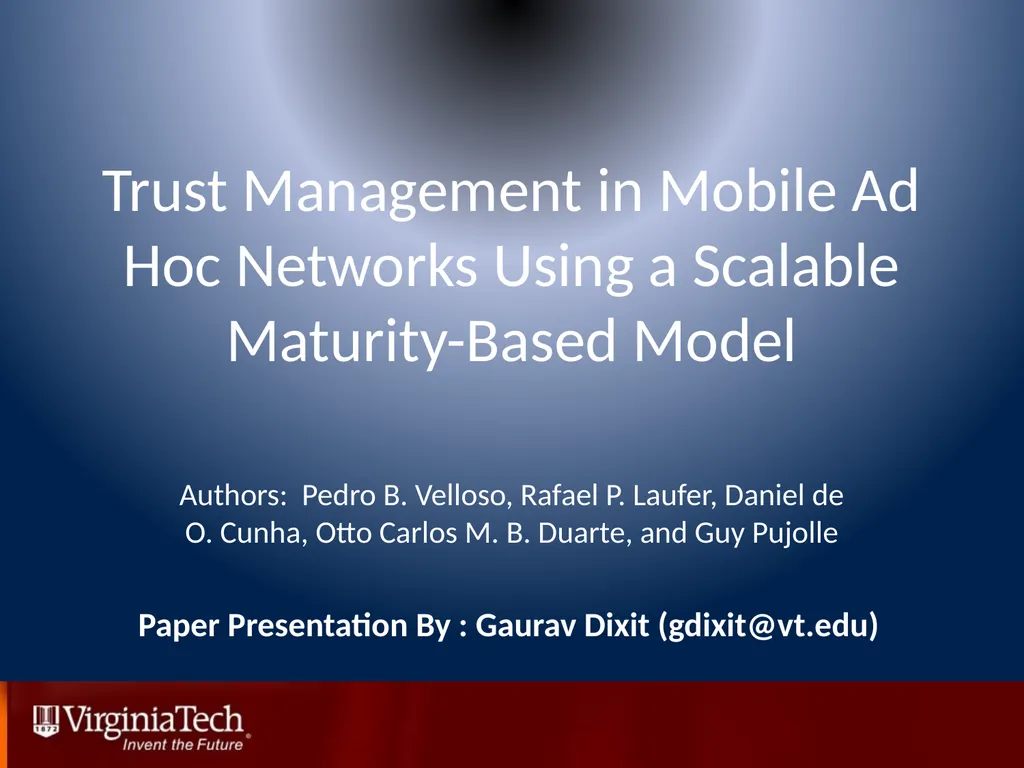
Trust Management in Mobile Ad Hoc Networks Using a
Author: faustina-dinatale | Published: 2025-05-29
Description: Trust Management in Mobile Ad Hoc Networks Using a Scalable Maturity-Based Model Authors: Pedro B. Velloso, Rafael P. Laufer, Daniel de O. Cunha, Otto Carlos M. B. Duarte, and Guy Pujolle Paper Presentation By : Gaurav Dixit (gdixitvt.edu)
Download Presentation
Download the PPT/PDF: Download
Transcript:
Loading transcript…